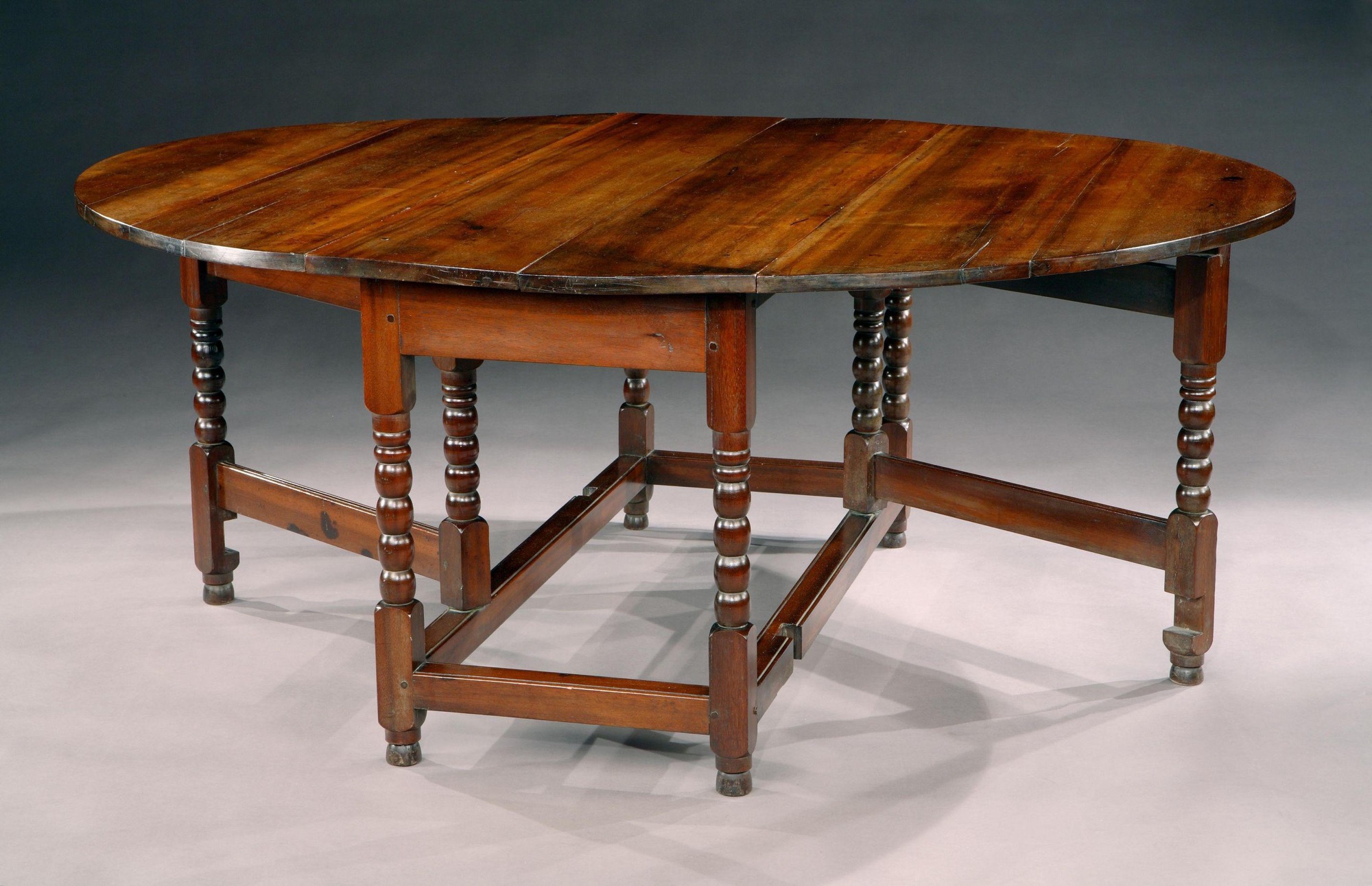A rare, large, 18th century, 10-12 seater, Colonial, alligator wood, gateleg table
10036
A rare, large, 10-12 seater, Colonial, alligator wood, gateleg table. The 1" thick, circular, plank top is in three sections. The central section, and the two flaps are individually made from two, large pieces of alligator wood. There are three tiny splices in the top. Three hinges, which are original, support each flap. The flaps are strengthened underneath with timber supports. The top is screwed and pegged into the base which comprises a simple frieze on elegant, bobbin-turned legs. Unusually, the inner gatelegs both rest on circular brass disks, presumably to prevent chaffing on the stretcher underneath. The legs are joined by moulded, square-section stretchers. The stretchers on the gates are particulary fine with unusual, double mortices and delicate channelling along the top edge. This is repeated on the underside of the gate top-rail and the frieze. The legs rest on the original double-ball toes, which show signs of wear and small losses. The alligator wood is exceptionally heavy, and dense with delicate graining and colour variations.
The colour is a rich brown, bearing similarities to mahogany and walnut. The patina is excellent and the density of the wood has created a delicate lustre. The timber is indigenous to the West Indies and it is most likely that this table was made in Port Royal, Kingston, Jamaica where there was a very active cabinet making business in the 18th century.
18th Century
1750
Alligator or musk wood, Guarea
Jamaica
Illustrated in A5 Woods in British Furniture Making (Bowett). 'A5 shows a gateleg of late-17th century date which is made from a variety of Guarea, although the exact species has been impossible to determine. It has some peculiarities of construction that suggest it may be of colonial (West Indian?) manufacture.'
Dr Adam Bowett has analysed the timber and in his Wood Identification Report he confirms that the table is made from a species of Guarea. There are about 200 species in all with most native to the West Indies, Central and South America. It has not been possible to confirm which species of Guarea the table is made from because so few have been recorded and anatomically defined. However, the most widespread species in the West Indies is Guarea trichilioides. This was known in the 17th and 18th centuries as musk or alligator wood. Sir Hans Sloane (1725) commented 'the smell is pleasant and sweet like musk or that of an Alleygator, whence the name'. It was thought that when disembowled alligator guts smelled sweetly, hence the name! The scent is perceptible on the timber. Edward Long (1774) in The History of Jamaica, states that the wood was used for furniture making in Jamaica, and was also exported to England. Given its idiosyncrasies, it is a good possibility that the table is Jamaican.

















